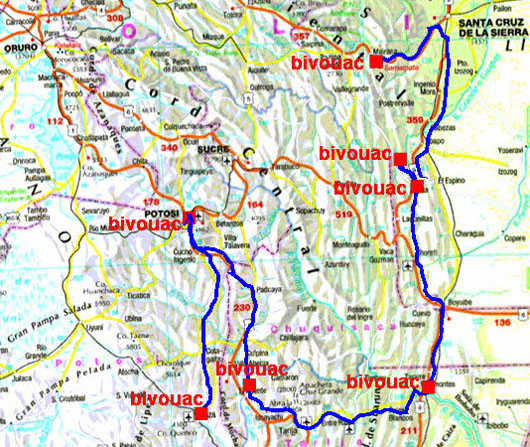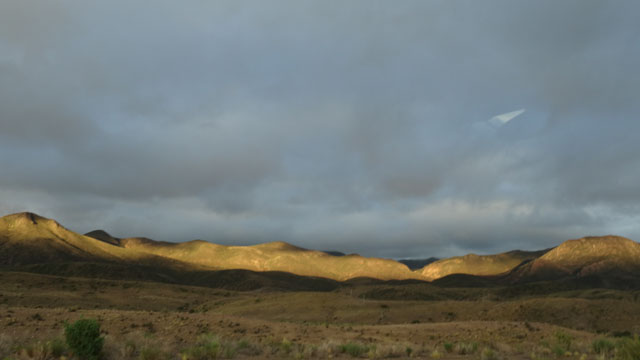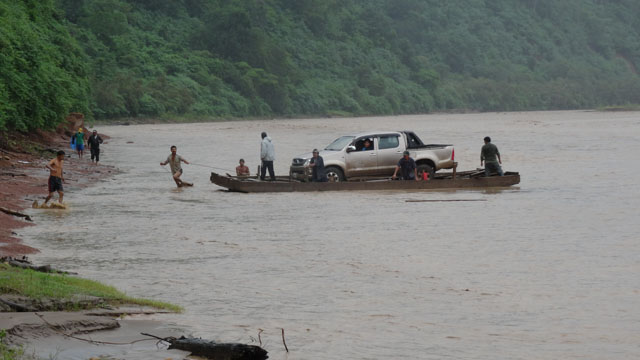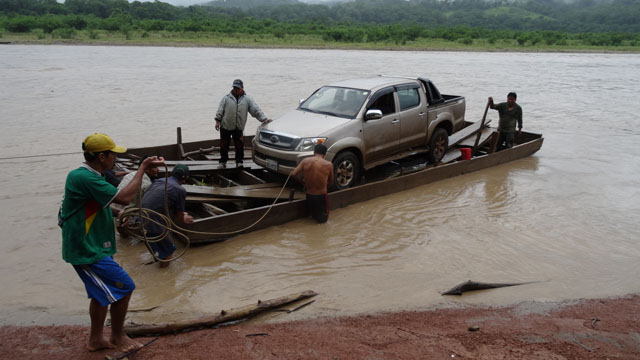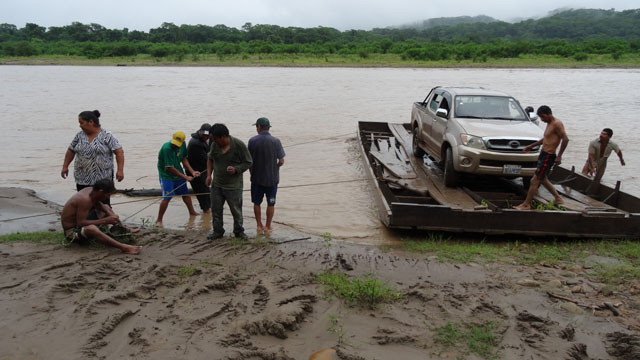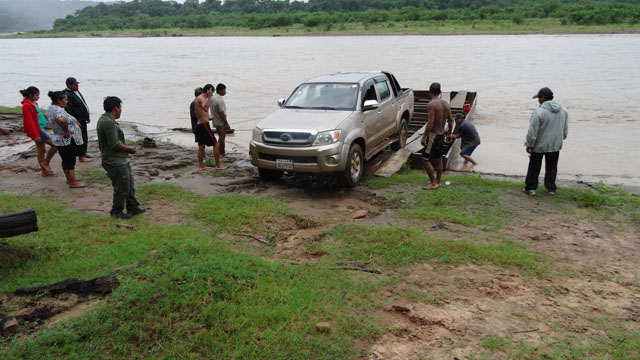Potosi
The took again on Monday, February 1rd I the road for Potosi where I
arrived around 11:40 to discover the city in a hole at 3976m high
surrounded by mountains with narrow one way streets. traffic is
problematic with the many polluting buses the atmosphere with their
diesel engine regulated evil. I was installed on the carpark of the
Tarija Hotel, known by the camper-drivers. I left in search of a
cybercafé which I found after three-quarter hours of walk
neighborhood. Indeed all the cybercafés do not agree to disconnect
Internet cable. Back to my truck I lunched to return to the
Cybercafé which closes from 13:00 to 15:00. Meanwhile I walked to
take my reference marks in this strange city with the tortuous and
populous streets. Thus I discovered Iglesia San Bernardo, Iglesia
Estudiante, Cathedral and Torre de la Campania de Jesus (vestige of
Iglesia).
En route Potosi-1, click the picture
Potosi-2, click picture
On Tuesday, February 2th it rained all during the night and the
temperature at 9:00 was of 7°C, brrr! At close to 4000m high the
diesel heating does not function any more… I went to visit the
downtown area and more particularly Casa Nacional de la Moneda. The
building was built between 1753 & 1773 for the manufacturing of the
coins as well as medals. It lodges paintings of the religious art of
the 18th century, ancient currencies and a strange machine out of
wooden of holm oak coming from Spain to roll the silver foil
intended for currency. The guided visit lasts approximately two
hours. Then I walked neighborhood in spite of the temperature and
painfulness to walk me at this altitude. I returned lunch at my
truck and to do the administrative job.
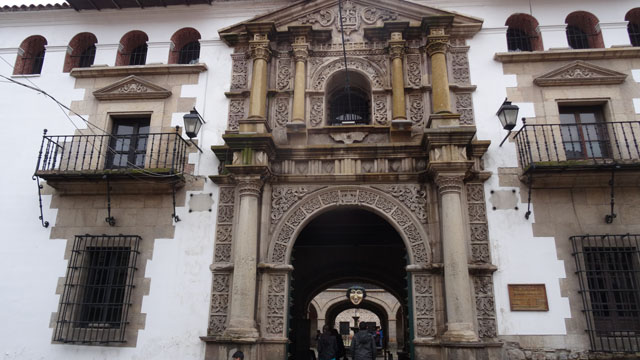
|
| Casa Nacional de la Moneda |
Ruta F1, Tarija
On Tuesday evening whereas I paid my stay on the carpark of the
Tarija Hotel, the owner informed me that the roads were blocked by
truck drivers protesting against the toll of the roads. Of
experiment it seemed that the duration of this kind of strike was
four days. On Wednesday morning I tried my chance. But alas at five
kilometers north of Potosi on the Sucre road some trucks blocked the
roadway. After my experiment in Chiapas and Guatemala I did not
approach and I turned around to turn over to the carpark. The owner
explained me that all the exits of Potosi were blocked for a
unlimited duration. I was not satisfied with this speech. Moreover
there would be two deaths. I went to Tourist Police in the buildings
of Infotur. The speech was different only the roads of economic
importance were blocked. The southern road to Tarija was open like
that from Tarija towards Santa Cruz. I changed my roadplan for this
turning of +500 km. In Camargo I made a complement of diesel fuel in
the main tank. The pump assistant smiles by looking at the
registration of my truck. I shine then asked for the price of the
diesel liter he showed me the price posted on the pump, that of the
nationals, whereas the foreigners pay three times this price.
Admittedly it is necessary to negotiate while saying without
invoice, thus I obtained a significant reduction. On my way I made a
strange meeting, an escaped sidecar from the second world war of one
does not know from where. I bivouacked away from the road.
 |
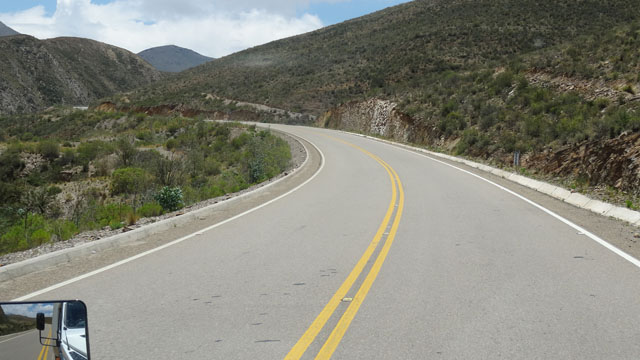 |
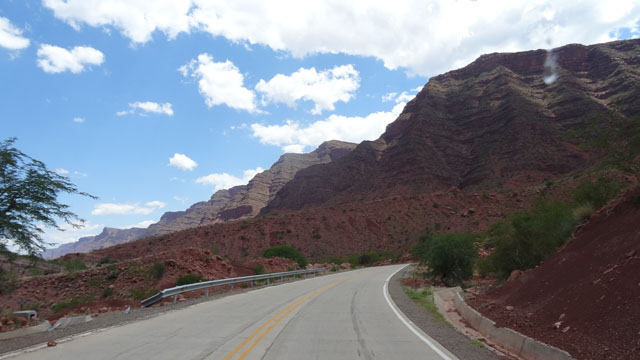 |
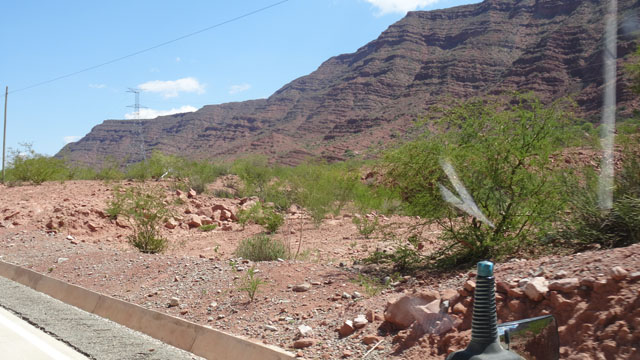 |
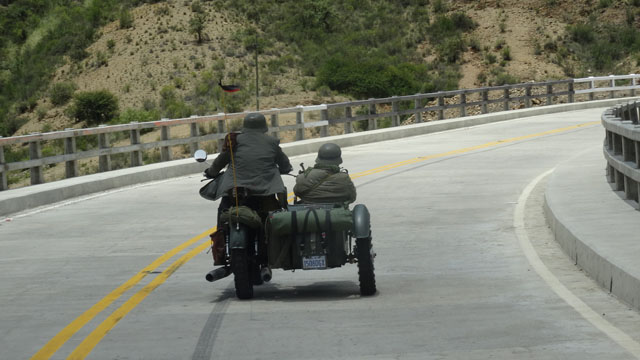 |
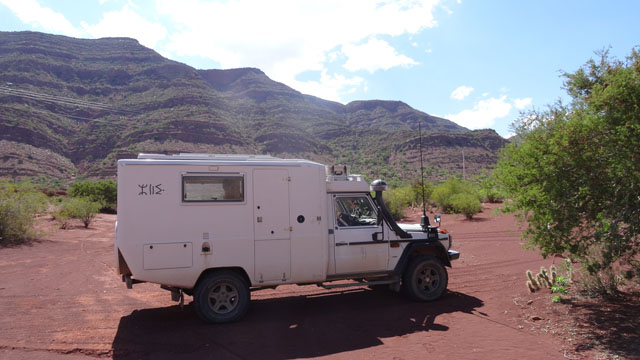 |
| Strange meeting, WWII ? |
Bivouac |
Ruta #9
Thursday, February 4th was still a long driving day but afterwards
Entre Rios it was on the ground track ruta #11. After having vainly
sought a supermarket in Tarija I took my courage for two hundred
kilometers of track sometimes good roadway, sometimes in work but
never disappointing by the beauty of the landscapes. I crossed the
village of Villamontes to find a bivouac, altitude 455 m,
temperature 34°C, away from the ruta #9 hidden behind trees.
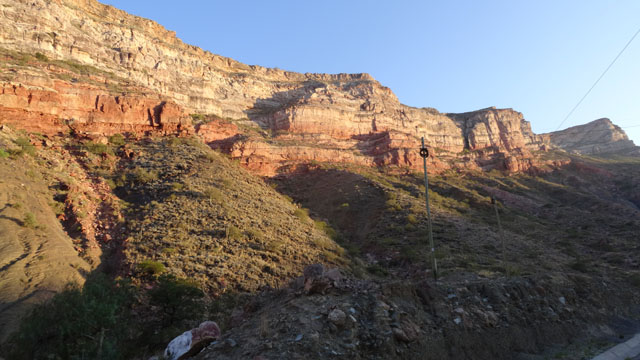 |
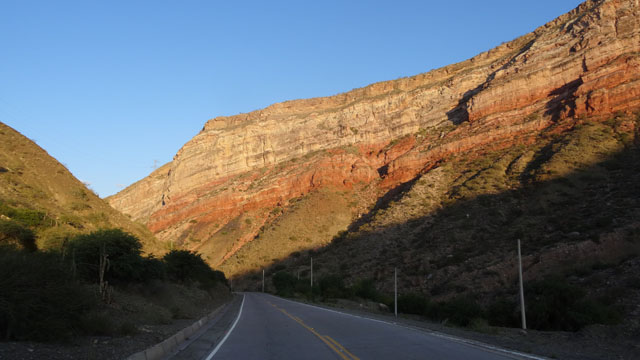 |
| Sunset on cliff |
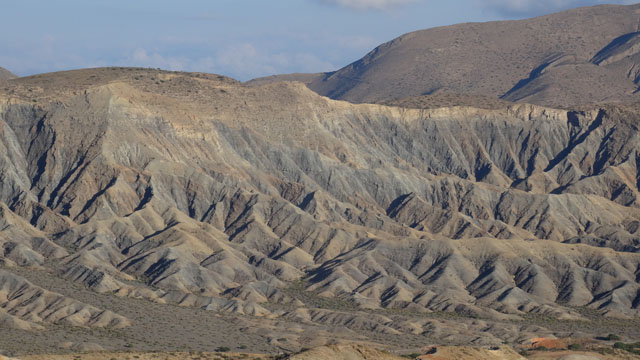 |
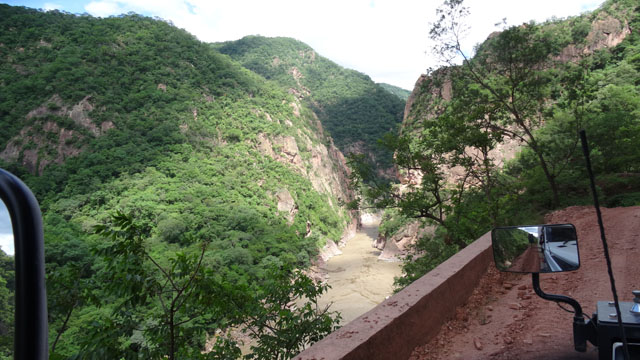 |
| Ruta #11 de Tarija a Villamontes |
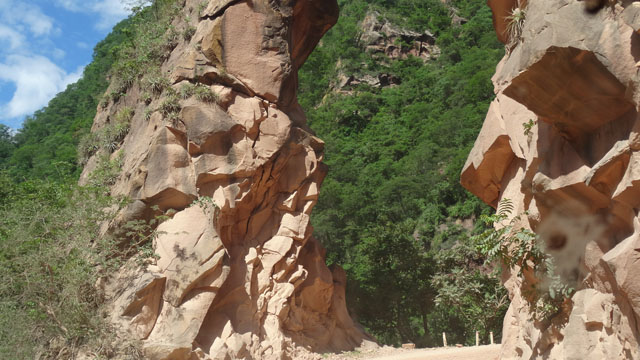 |
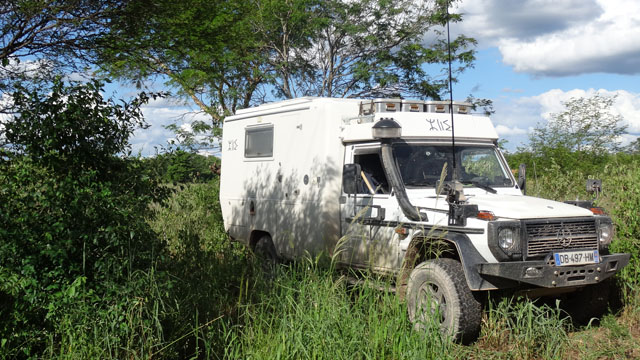 |
| Ruta #11 |
Bivouac |
Ruta #9 & ruta #22
On Friday, February 5th I took the ruta #9 up to Ipita while forking
on the left on the ruta #22, a rather good ground track at the
beginning then a serpentine in the mountain with ruts due to the
water run-off. Around 14:45 I blocked in front of a ford of which
the feasibility was doubtful. I was perplexed. I decided to possibly
expect the passage of local people. Indeed around 17:00 the
maintenance crew of the roadway system which I had seen on the track
arrived by motor bike. I questioned them. They made me understand
that with my vehicle I did not have any problem. Moreover they
crossed the ford, the depth was weak and stable. They expected other
side my crossing without difficulty. Of course I thanked them and
established my bivouac on this side. The way up to Vallegrande is
approximately 6:00from a ferry at one hour of the ford.
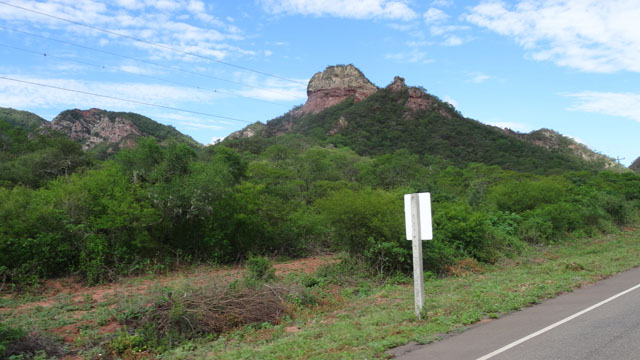 |
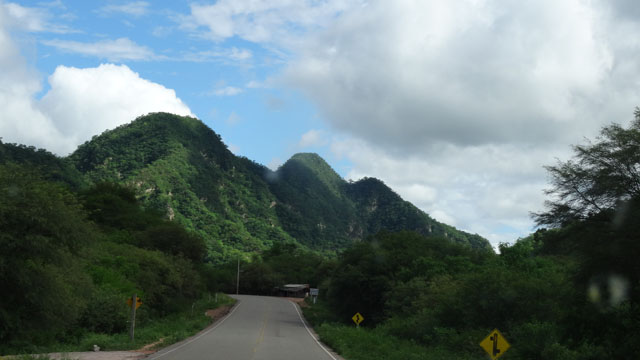 |
| Ruta #9 |
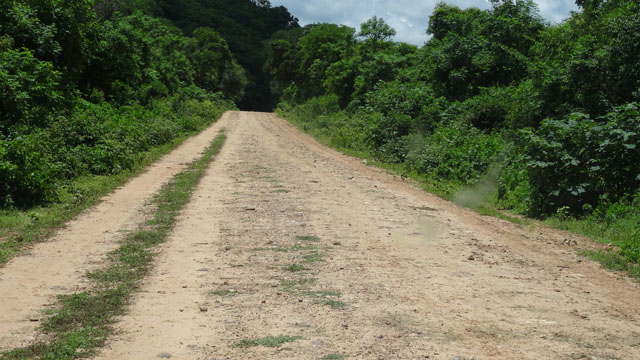 |
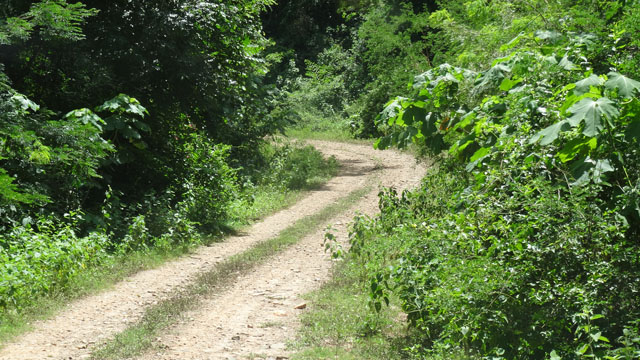 |
| Ruta #22 |
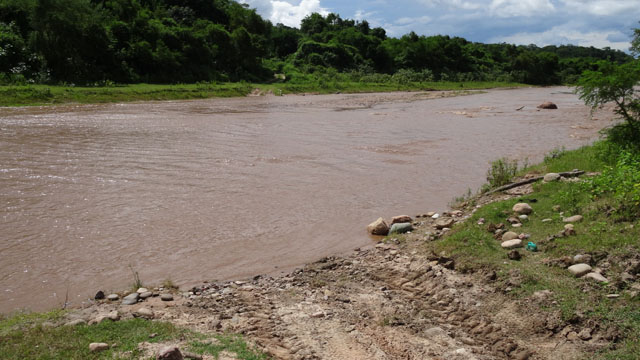 |
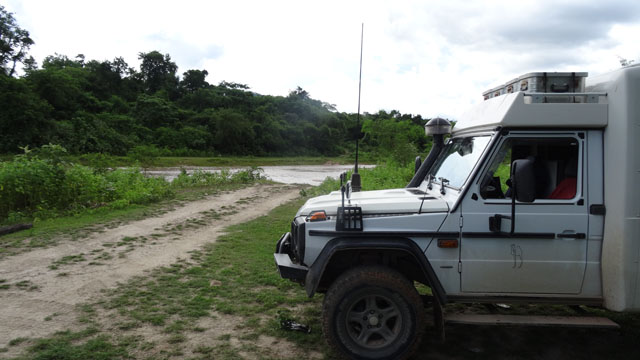 |
| The ford! |
Bivouac |
Ipita, ruta #22
On Saturday, February 6th I was around 6:30 at the edge of the river
to expect the ferry. It arrived around 7:00 charged with a van. The
ferry is drawn with arm of men. But in the middle of the river the
depth of water was very large. The ferry runner told me that it was
necessary to expect the fall of the level of water around 9:00.
Indeed it had rained all during the night and it always rained.
Around 9:00 the ferry runner again told me to wait until 12:00. I
reflect, from the ferry up to Vallegrande it takes approximately
6:00 to traverse the distance. I decided not to expect the
hypothetical fall of the level of the river, it always rained. I
returned to Ipita and the ruta #9 to go to Samaipata putting a cross
on the visit of the Che Guevara's museum at Vallegrande. I am not a
Che's aficionado. In Ipita I bivouacked at the edge of a lake in the
rain.
Samaipata
Failing to have to persist on the ruta #22, on Sunday February 7th I
made a long detour of 290 km by the ruta #9 to join Samaipata and
the campground La Vispera held by very voluble Dutch with the look
of professor Nimbus. The site is at 1696 m high in a green landscape
harbor of quietude. I spent two days in these idyllic spot to level
my trip in Bolivia before entering Paraguay.
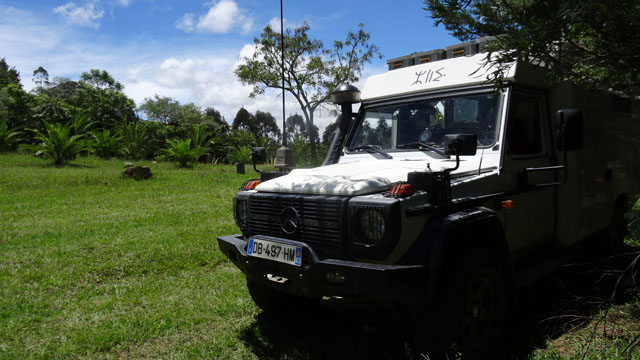
|
| La Vispera |
